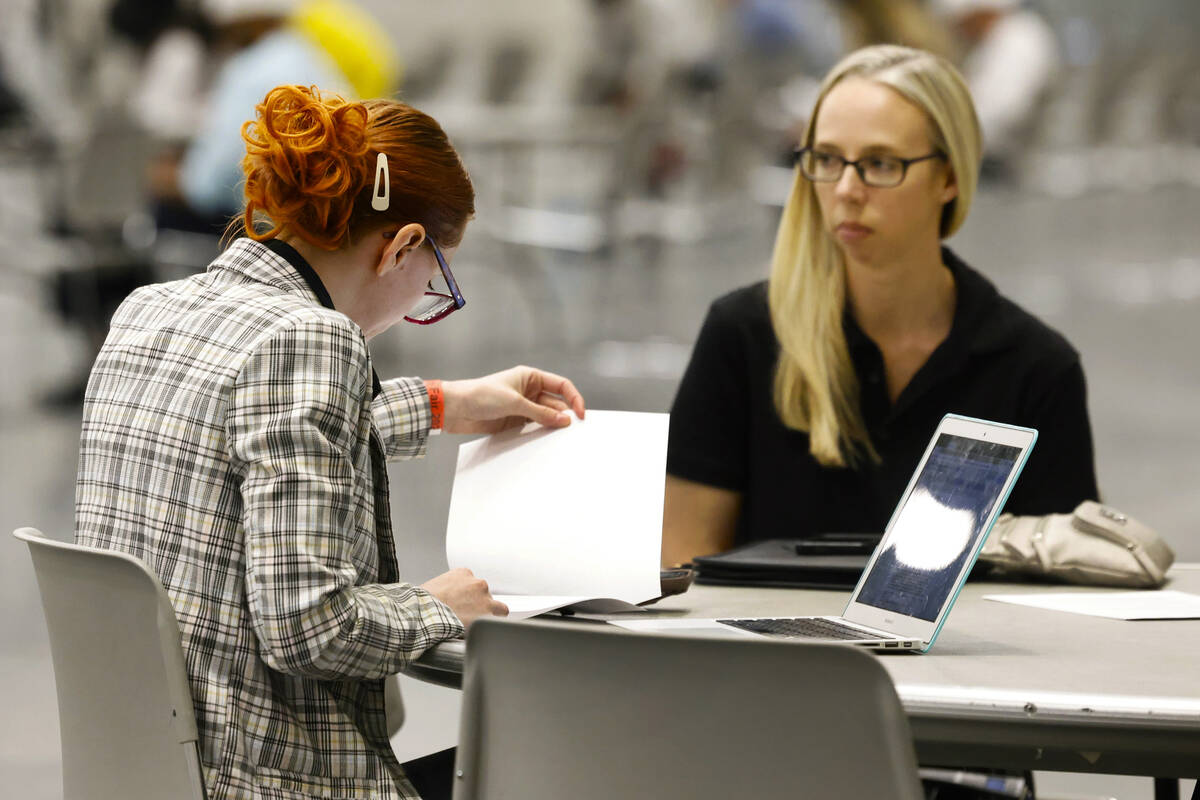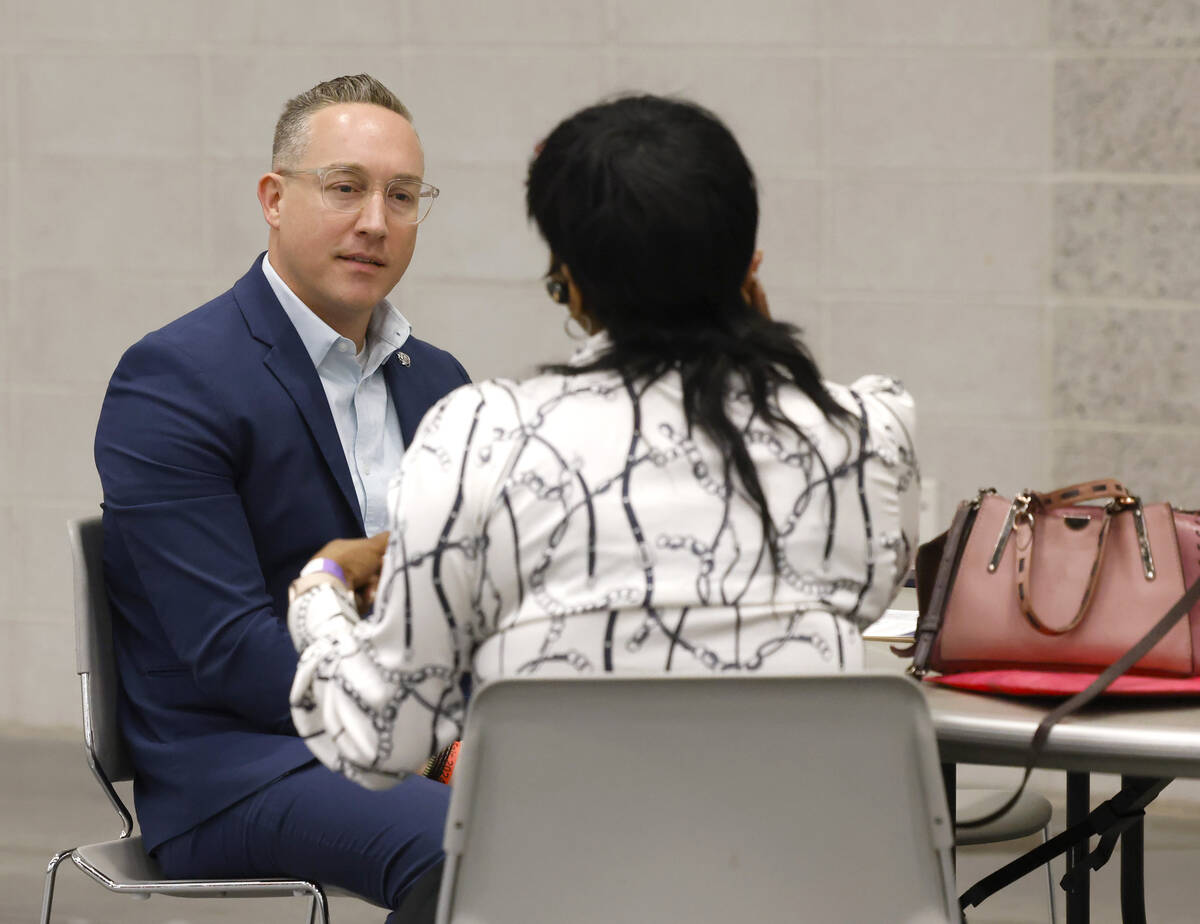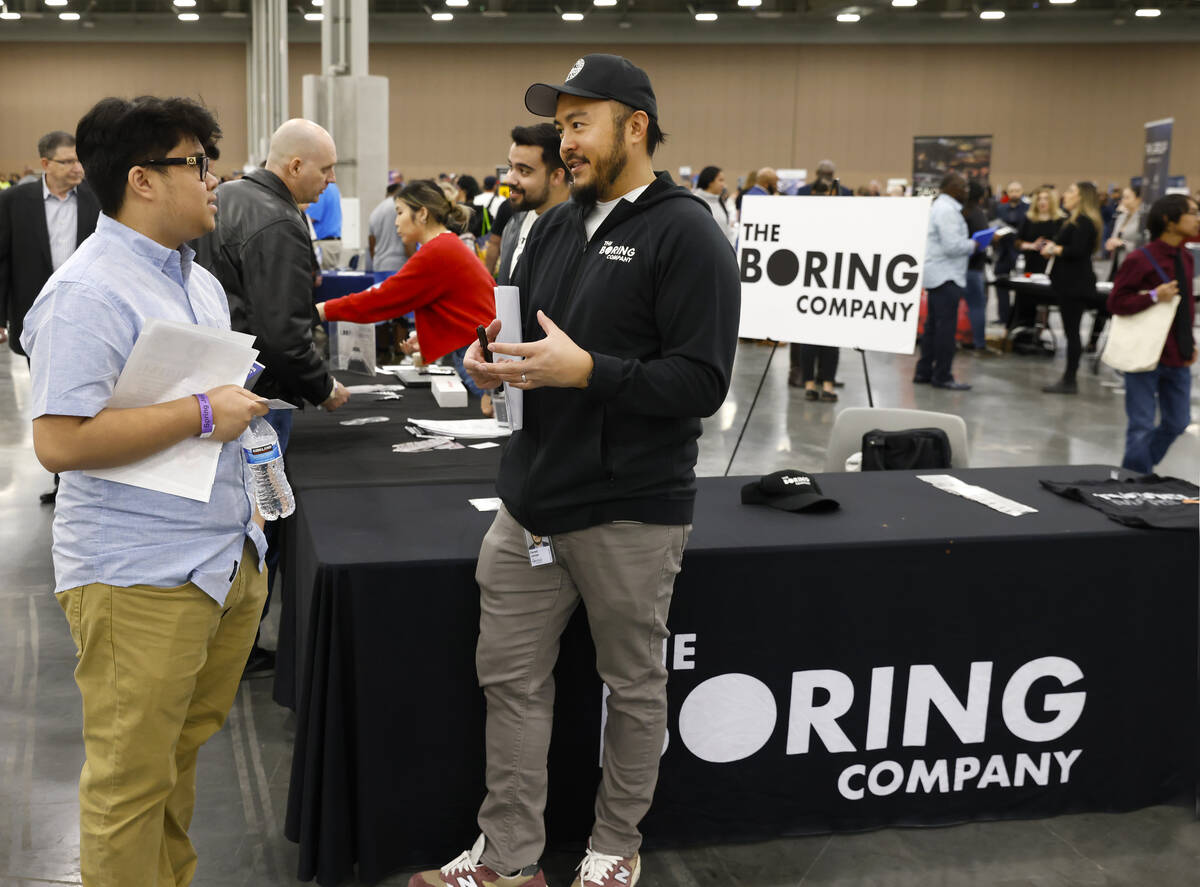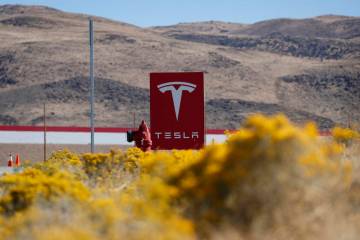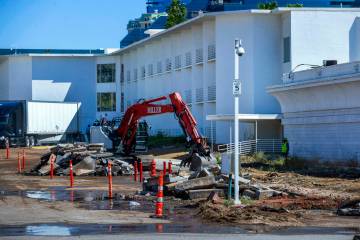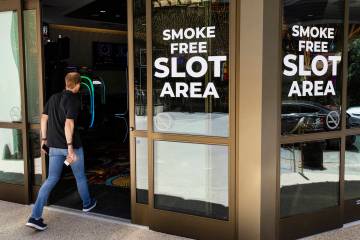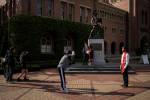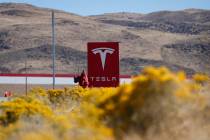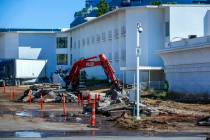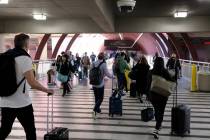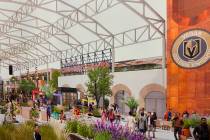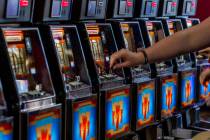‘We’ve landed the plane’: How Nevada’s workforce is changing
Tina Tope spent several hours in early March passing out her resume and perusing available employers during Clark County’s annual Spring Job Fair. A recent transplant to the region from the Bay Area, the former lab technician had already applied to about 20 jobs before moving at the beginning of the month.
“I’m trying to find something that will solidify a career because I’ve had to jump from job to job quite a lot and I don’t like doing that,” Tope said. “I don’t like the whole process of finding a job, trying to sell yourself to another company — it’s exhausting.”
Tope is one of the thousands of job seekers who exemplify Nevada’s changing labor force, with hundreds of new workers entering the market or trading jobs looking for higher wages. It also reflects U.S. officials’ larger goal of tamping down inflation, by raising interest rates and slowing hiring, without causing a recession.
Local economists say the state and the Las Vegas Valley’s labor markets are still strong. The region’s dominant industry, leisure and hospitality, is particularly seeing wage growth outpace inflation.
In the Silver State, February’s seasonally adjusted unemployment rate was 5.2 percent, and, for months, has consistently ranked as the highest or among the highest compared to the rest of the country, according to monthly reports from the Department of Employment, Training and Rehabilitation. All the while, the state is also adding jobs at higher rates than others. It had the highest job growth rate in the U.S. in February at 3.4 percent.
While the labor market is still robust, local economists say it has weakened since coming out of the pandemic-related economic restrictions.
“I think we’re in the soft landing, but we’re still in the last mile or two,” said Andrew Woods, UNLV’s director of the Center for Business and Economic Research. “We’ve landed the plane, but it’s still fast-moving on the ground.”
Tight labor supply
David Schmidt, DETR’s chief economist, said the dichotomy of leading the country in both the unemployment rate and job growth rate illustrates a shift that’s happened over the last year compared to the tightness in labor supply in 2022.
“We have more people entering the labor market, or re-entering the labor market, or voluntarily left their last job as opposed to people who lost it,” Schmidt said. “That’s more short-term, not long-term. People aren’t unemployed and stuck there. It’s people who look for work, find work, then flow out.”
A weakened labor pool can also help the economy, he said. More available workers than positions can drive up wage inflation, which influences other inflation and affects consumer sentiment. Nationally, there were 1.45 jobs open for every unemployed person in January, according to the Bureau of Labor Statistics. That’s well above the pre-pandemic levels of 1.2, but a drop from a near 2-to-1 peak.
“We saw this as we came out of the pandemic: low unemployment causes high wage inflation, which then turns into price inflation and inflation for the overall economy. So, incredibly low unemployment, it’s bad for the economy,” he said. “Very high unemployment isn’t good either because you have people not able to pay rent or buy groceries.”
Factoring in sentiment
But that sentiment can be heard from job seekers, some employers said. Wendy Hodge, a talent acquisition partner with airport ground services firm Swissport International, said applicants have been inquiring most about full-time hours and comparable wages.
“Right now, inflation is the biggest driver — not having enough money to feed your family and pay mortgages,” Hodge said. “So what we’re hearing is, what does your salary look like for you guys and what else is your company offering?”
With inflation still sticking around — the latest Consumer Price index reported annual inflation of 3.2 percent — Woods said that consumers and debt-payers will still feel the financial pinch. But some workers will continue to benefit from the wage growth that comes from the tight labor market. Leisure and hospitality workers, in particular, are still experiencing wage gains that have outpaced inflation, he said.
Schmidt said he thought the labor market reflected a move toward an equilibrium between workers and available work. He said historically, about 5 percent unemployment represents a balance that was similar to statistics in 2018.
“If we call it something like, ‘the share of people looking for work,’ it might have a more positive feeling,” Schmidt said. “Unemployment rate has a negative sense because we always use it as a way to show how things are bad. But it’s really just saying how many people are out there looking for work and in that context, we are growing.”
McKenna Ross is a corps member with Report for America, a national service program that places journalists into local newsrooms. Contact her at mross@reviewjournal.com. Follow @mckenna_ross_ on X.



